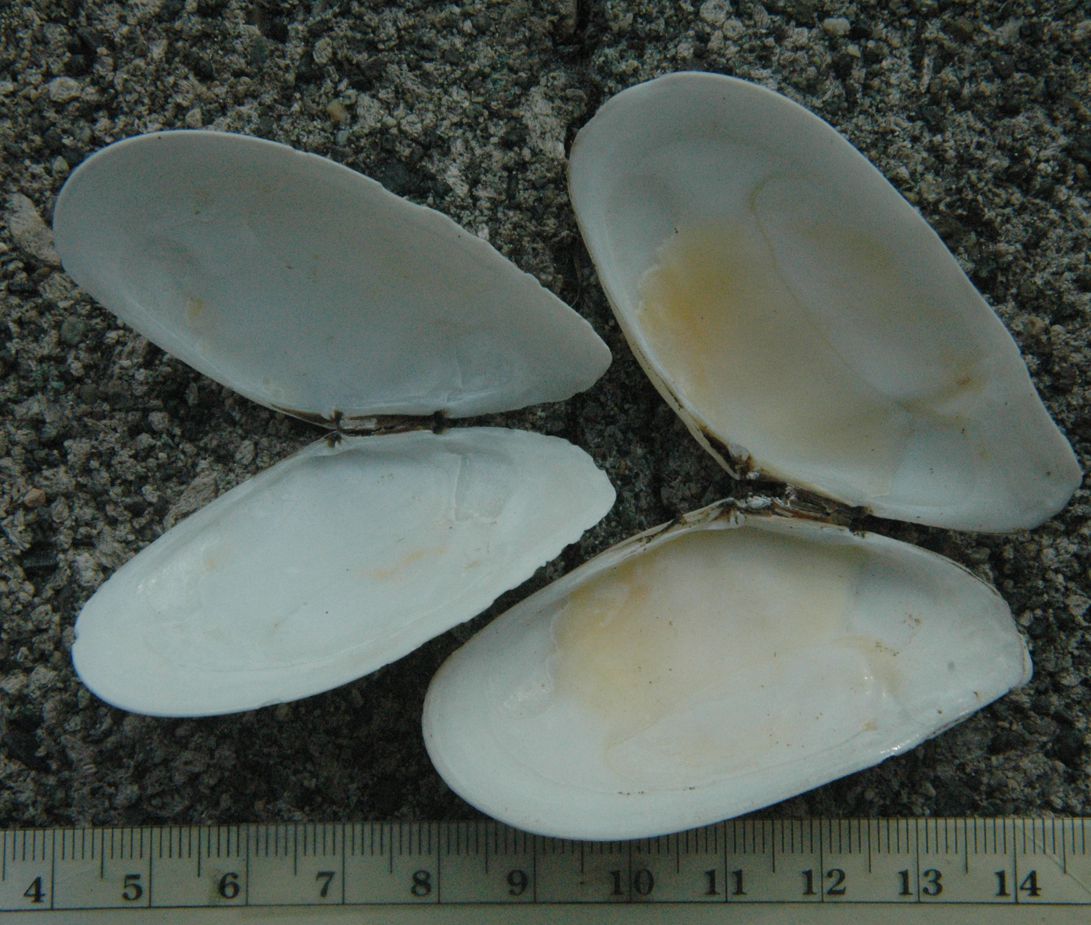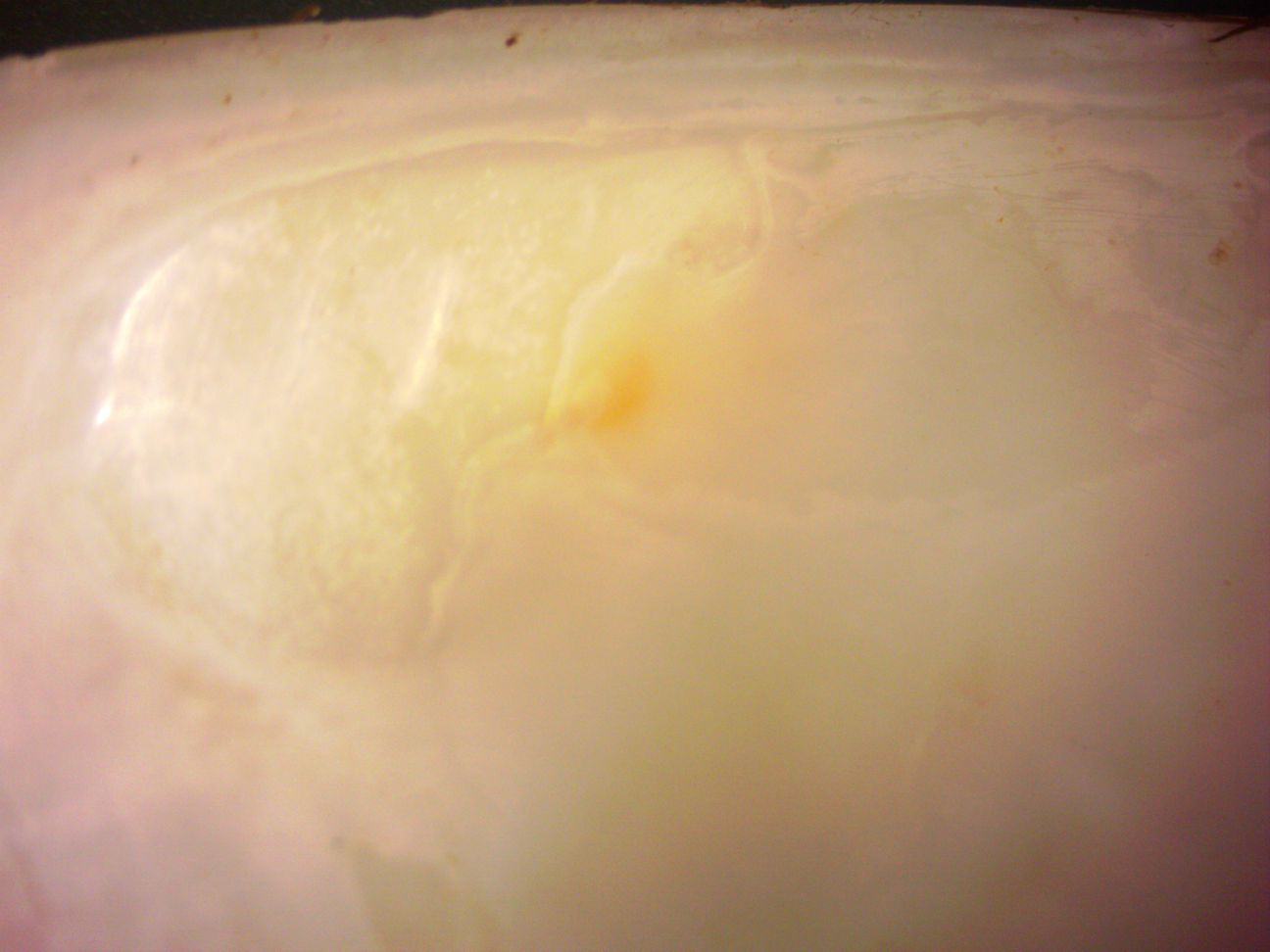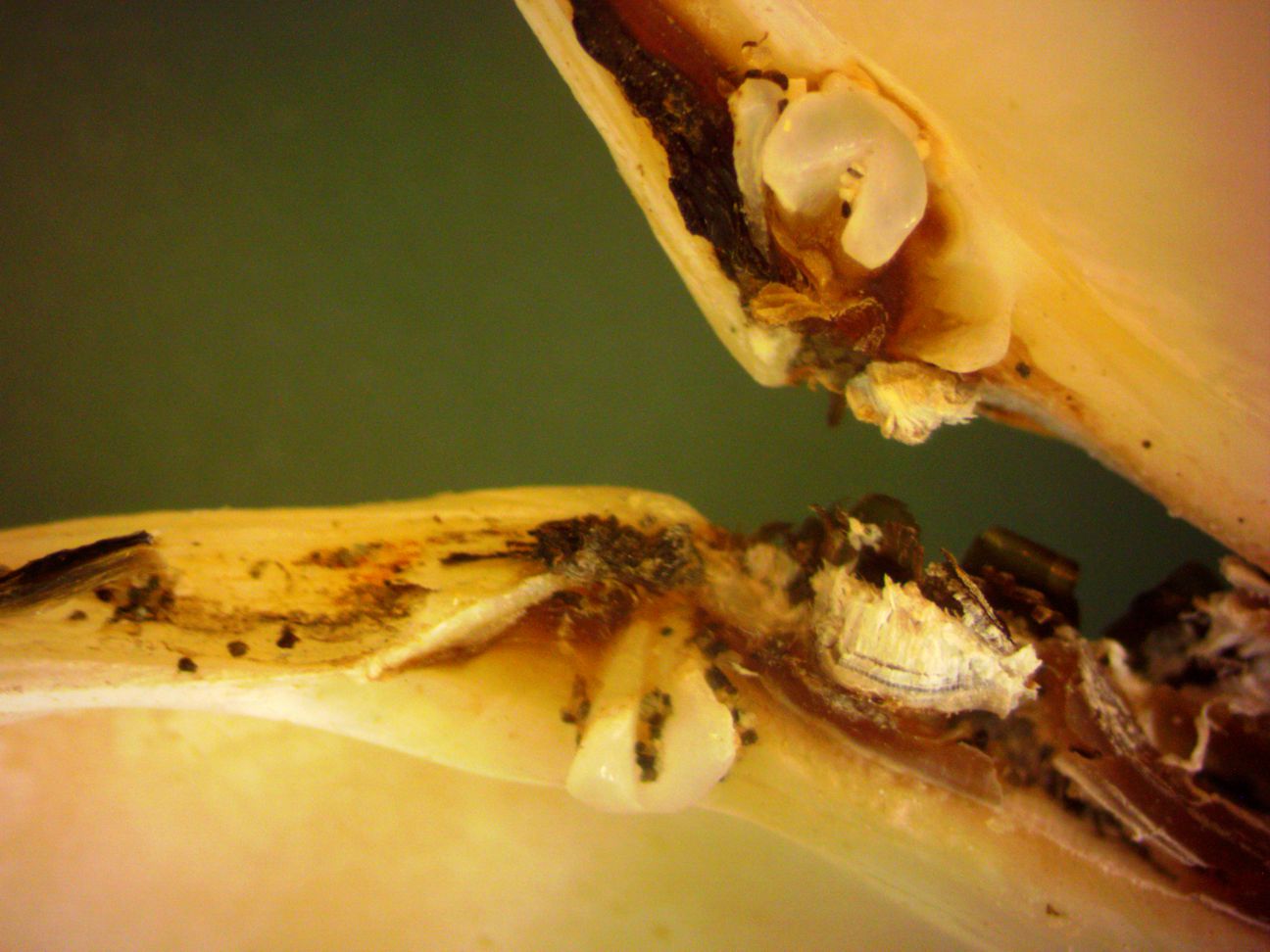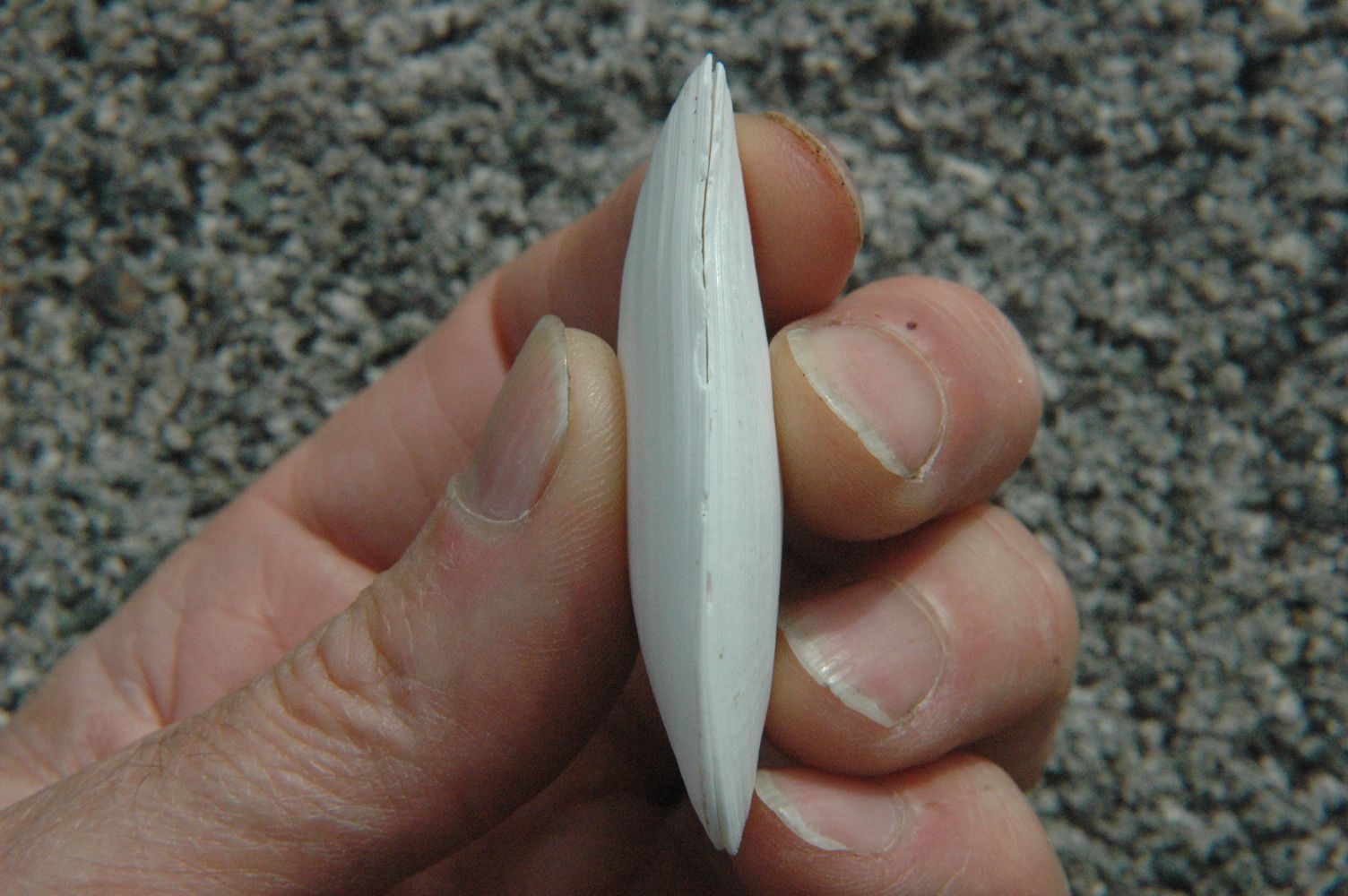Description: As with all members of Family Tellinidae, on the outside the shell has no radial ribs and only fine concentric growth lines. The shell is about twice as long as high, and the anterior end of the shell is broader and more rounded than the pointed posterior end. The hinge ligament is external. The shell valves close together or nearly so on the posterior end. Inside the clam has two adductor muscle scars of almost equal size, a pallial sinus (photo), and two cardinal hinge teeth on each valve (photo). It has no chondrophores. Genus Tellina also has lateral hinge teeth, especially visible in the right valve. Tellina bodegensis has lateral teeth along with the cardinal teeth (photo) and no ridge just posterior to the anterior adductor muscle scar (photo). Shell is white outside, may have yellow or pink tinge inside. Length to 6 cm.
How to Distinguish from Similar Species:Tellina modesta has a ridge just posterior to the anterior adductor muscle and grows only up to about 2 cm long. This is the largest local Tellina. Macoma clams such as M. nasuta have no lateral hinge teeth. The posterior end of both this shell and M. nasuta turn slightly to the right (photo), but the turn in M. nasuta seems more marked.
Geographical Range: Southern Alaska to Bahia Magdalena, Baja California, Mexico
Depth Range: Intertidal to 100 m
Habitat: Exposed sandy shores.
Biology/Natural History:
This species
is uncommon. The shell lies on its left side a few
centimeters under
the sand and extends its two separate siphons up into the
water.
The long inhalant siphon moves around the surface of the sediment
vacuuming
up fine detritus. Predators include surf scoters.
| Return to: | |||
| Main Page | Alphabetic Index | Systematic Index | Glossary |
References:
Dichotomous Keys:Carlton, 2007
Flora and Fairbanks, 1966
Kozloff, 1987, 1996
General References:
Harbo, 1997
Lamb and Hanby, 2005
Morris, 1966
Morris et al., 1980
Sept, 1999
Scientific Articles:
Web sites:
General Notes and Observations: Locations, abundances, unusual behaviors:
I have not often found this shell and it is said to be uncommon. In July 2014 there were many along the high-tide strand line at Mukkaw Bay, next to Hobuck Campground near Cape Flattery. The valves had a surprisingly wide range of thickness, from moderately thin and fragile to at least twice as thick.

This view of the interior (anterior
is to the left) shows the general shell shape, the adductor
muscle scars and pallial
sinus, and the slight yellow cast present in some
shells. Although
these two
clams are just slightly different in length they differ sharply in
thickness. The ventral
edge of the shell to the left is 0.7 mm thick, while the same region in
the shell to the right is 2.7 mm thick.

The anterior
adductor
muscle
scar does not have a ridge just posterior to it. The anterior
end of the shell is to the left in this photo.

There are two cardinal
hinge teeth on each valve,
plus at least one lateral
tooth. The lateral
tooth is most easily seen on the right valve
(bottom valve
in
this photo). Anterior
is to the left.

This ventral view (anterior
end down, right valve
to the right) shows the slight rightward bend to the anterior
and especially the posterior
end of the shell. The clam lies on its side in the
sediment with the right valve
upwards and extends its siphons
up from there. Compare the curvature of this species' shell
to that
of Macoma
nasuta.
Authors and Editors of
Page:
Dave Cowles (2014): Created original page
CSS coding for page developed by Jonathan Cowles (2007)
Salish Sea Invertebrates web site provided courtesy of Walla
Walla University
